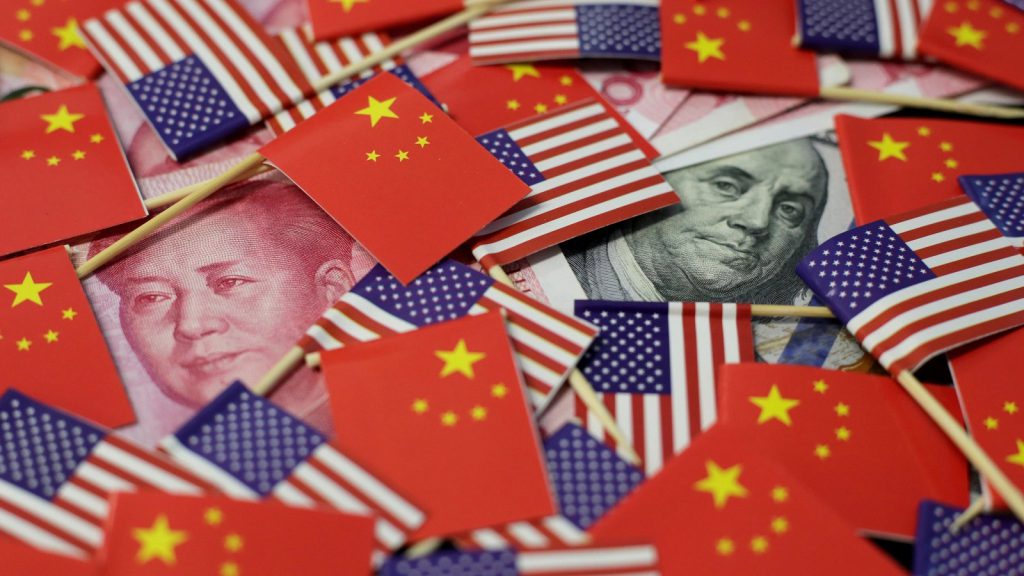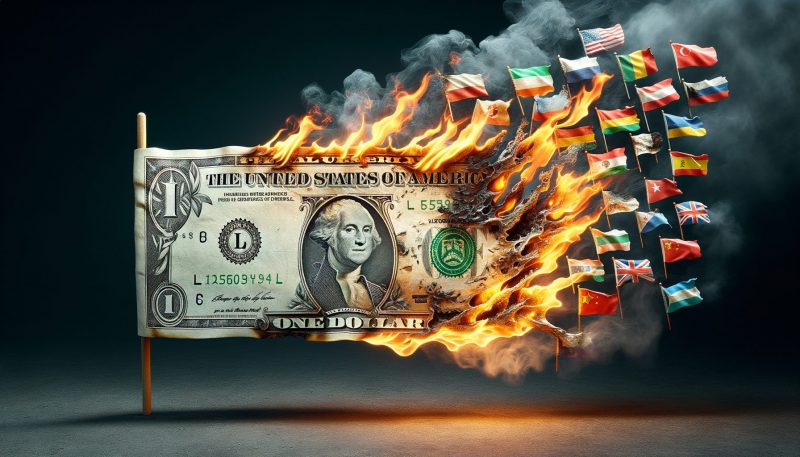The question of how much worse the dollar fall could get is becoming increasingly urgent as the US Dollar Index crashes through critical support levels. At the time of writing, the greenback has lost nearly 11% of its value during the first half of 2025, and this marks the steepest decline since 1973.


Investors are fleeing toward alternatives such as gold, euros, and yuan, with central banks also accelerating their diversification away from US assets. This historic downturn raises critical questions about just how much further the world’s reserve currency might fall.
Also Read: BRICS: 50+ Nations Now Use Yuan, Rupee, Ruble, Not US Dollar in Trade
Why The Dollar’s Crash Fuels Gold Gains, Euro Surge, And Yuan Power


Central Banks Drive Gold Rush Amid Dollar Uncertainty
The ongoing dollar fall has prompted central banks, particularly in China, to aggressively buy gold as an alternative to US assets. Net assets in gold exchange-traded products have reached $326 billion as the US Dollar Index crash continues to unfold. This gold vs dollar dynamic in 2025 shows precious metals significantly outperforming the weakening greenback.
Central banks, particularly in China, have been aggressively accumulating gold to diversify away from the US dollar. This represents a clear sign that investors are turning to gold again, driven by its reputation as an inflation hedge. Gold’s 2025 inflows are being fueled by macroeconomic and geopolitical uncertainty, central bank diversification, and investor anxiety around inflation risk.
The shift toward gold represents a fundamental change in how central banks are managing their reserves right now, with many questioning just how much worse the dollar fall might become.
Euro Emerges As Primary Beneficiary Of Dollar Weakness
The euro dollar forecast shows significant upside potential as the currency emerges as the strongest G10 performer in June 2025. At the time of writing, the yuan dollar trend also favors Asian currencies over the weakening greenback, with investors seeking stability outside US assets.


Chris Turner, global head of markets at ING, wrote:
“The ECB is no doubt welcoming this ‘global euro’ moment, but [it] also must be acknowledging that there is an awful lot of work to be done to attract global funds out of the US. Here, we would say progress on joint EU debt would be the single biggest game changer.”
J. Safra Sarasin FX strategist Claudio Wewel explains:
“The effective tariff rate on US imports should rise from here, which in combination with the weaker dollar should drive prices higher and weigh on domestic consumption.”
Yuan Strengthens As Dollar Dominance Questioned
The yuan dollar trend shows strengthening momentum as China reduces dollar dependency. JPMorgan expects the yuan to reach 7.15 against the dollar by end-2025, and this reflects broader questions about how much worse the dollar fall might become. Chinese banks have also reduced their dollar lending to other emerging markets, increasing yuan-denominated lending instead.
ODDO BHF Chief Investment Officer Jan Viebig explains:
“International investors have become skeptical of the dollar as public debt continues to rise and the White House aggressively pushes for a policy of ‘easy money.’ In addition, concepts such as ‘revenge tax’ or the ‘Mar-a-Lago Agreement’ make international investors uncomfortable.”
Hong Cheng, Morningstar’s head of fixed income and currency research, said:
“In the near term, we believe the dollar may face continued headwinds due to a moderation in US economic growth and the relative shift toward more growth-supportive fiscal and monetary policies abroad.”
The US Dollar Index crash has been accelerated by Fed policy uncertainty, with the euro dollar forecast pointing to 1.20 by year-end. The gold vs dollar performance gap in 2025 continues widening as investors seek alternatives, and many are asking just how much worse the dollar fall could get.
Also Read: These 3 Things May Accelerate The De-Dollarization Move
Cheng also stated:
“Over the longer run, while we have not yet observed substantial outflows from official accounts and foreign investors, the likelihood of a structural reallocation away from US dollar assets has increased, particularly amid rising geopolitical and policy-related uncertainties. That said, any meaningful impact on the dollar’s role as the dominant global reserve currency is likely to unfold over a multiyear horizon, given the lack of viable alternatives.”





